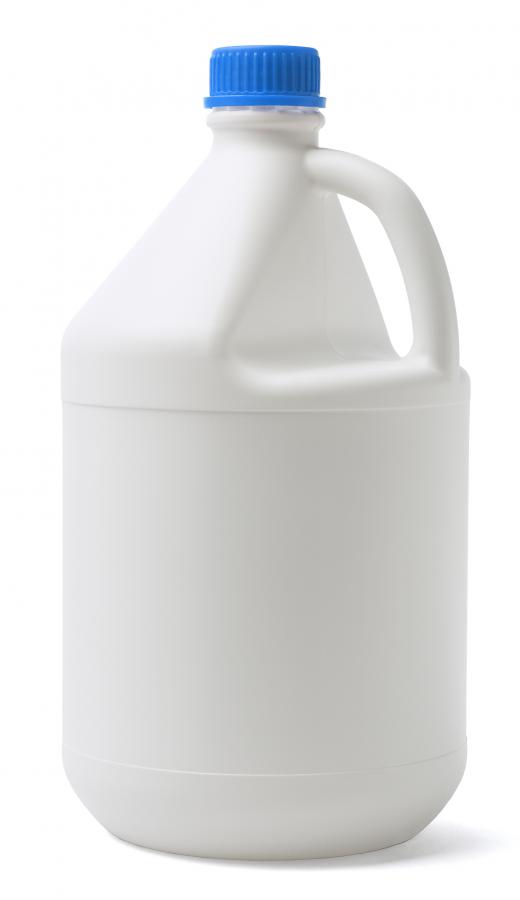What is Chaetomium?
 Mary McMahon
Mary McMahon
Chaetomium is a fungal genus which contains around 80 known species of mold. These molds are among the group of molds which can cause health problems in humans as a result of prolonged exposure, making them of interest to people dealing with mold problems in their homes or in prospective real estate acquisitions. Additional study is needed on Chaetomium fungi to determine how hazardous they are to human health, but evidence would seem to strongly suggest that they are harmful.
These fungi like to live on cellulose, and are found on wood, compost, sheet rock, straw, and similar materials. The fungal colony can take as long as three weeks to mature in a cold environment, producing spores which spread the fungus via the wind. The colony starts out white, turning dark gray to olive when it is mature, with a cottony texture. The spores of Chaetomium fungi have a very distinctive lemon shape which makes them easy to identify, and the fungus has a signature musty odor.

C. globosum is the species most commonly found indoors. This species is of particular interest because it appears to produce mycotoxins, compounds which are detrimental to human health. These fungi have been definitively linked with allergies in people who are sensitive to molds, and they appear to produce mutagenic mycotoxins which interfere with DNA replication in organisms like humans and other animals.

Mutagens can cause long-term damage, especially if they end up in the reproductive tract, where they can cause serious problems for future generations, if not infertility. In the short term, Chaetomium exposure can lead to classic allergy symptoms such as wheezing, runny eyes, and coughing, and the fungi have also been implicated in several cases of severe infections. Chaetomium can cause onychomycosis, or fungal infection of the toenail, and mycotoxic varieties pose a serious threat to human health if they enter the bodies of immunocompromised individuals.

People who think that they have Chaetomium in their home can ask for a test with an air sampling device which will identify the fungus. Ideally, contaminated material should be removed and burned so that the fungus cannot spread, although it is also possible to clean with soap and a bleach rinse in an attempt to kill the fungal spores. Keeping environments dry and warm can also help eliminate fungal infestation, and it is especially important to pay attention to spaces which cannot be seen, such as the area between walls of a home.
AS FEATURED ON:
AS FEATURED ON:















Discussion Comments
Bleach should never be used on any household mold as it makes it more virulent and dangerous. Chaetomium exposure has been linked to serious health effects such as MS, fibromyalgia, Rheumatoid Arthritis, Cancer, and Diabetes II. If Chaetomium is found it is important to remediate it immediately.
@cloudel - It’s good that your friend moved out of that house. Chaetomium has been known to cause hay fever and asthma in those who are more sensitive to such things. That girl could have been in serious danger, since she has a compromised immune system and trouble breathing anyway.
When my husband and I first got married, we didn’t have a lot of money to spare, so we rented an inexpensive home that needed a bit of work. One bedroom had Chaetomium growing on the wall. I mixed bleach and water in a spray bottle and saturated it. In a few hours, I wiped the mold right off the wall. I just hope it isn’t growing anywhere else. I know that Chaetomium can grow under the floor as well as on damp drywall or gypsum board.
I have a friend with a 10 year old daughter whose immune system is quite weak and will probably always be. She catches every contagious illness she comes into contact with, and she is allergic to every substance that commonly causes allergies.
Unfortunately, my friend recently discovered that she had Chaetomium in her home. Her poor daughter had been miserably congested from allergies to it, and she often had to take breathing treatments. Every time I see the little girl, she has bright pink and purple skin around her eyes from constant exposure to the allergen.
They just found a new home free of Chaetomium and finished moving in last week. The girl's condition has started to improve, and I expect that next time I see her, the purplish skin will be normal skin color again.
Post your comments